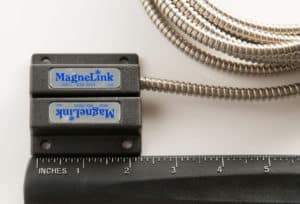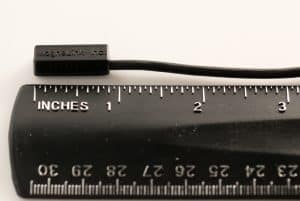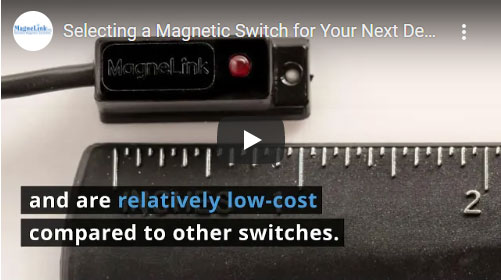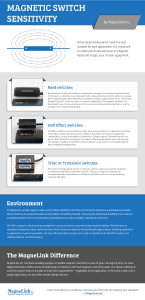How an Environment Affects a Magnetic Switch
Comments Off on How an Environment Affects a Magnetic SwitchA magnetic switch is a device that closes an electrical circuit when exposed to a magnetic field. The switch stays open until it’s impacted by magnetism. This switching mechanism is ideal for underwater deployment and conditions where electric sparking could trigger explosions or fires.
How Reed Switches Work in Different Environments

Hermetically sealed reed switches add to the safety of this electrical switch. Besides having simple circuitry, the magnetic sensor can detect a magnetic field while its contacts are safely contained in its hermetically sealed housing.
Several design factors impact the performance and operational continuity of a reed switch in a shock or vibration environment. These measures help prevent functional problems, such as:
- False signal interference/responses
- Tempering with the switches’ magnetic sensitivity
- Breaking the glass capsule
Below are essential factors to consider when incorporating a magnetic reed switch into your design:
Temperature
Temperature changes impact magnetism by either strengthening or weakening a magnet’s pulling force. Heating a magnet decreases its magnetism by ramping up the speed and irregularity of atomic movements within its structure. On the other hand, lowering the temperature of a magnet expands its magnetic field and boosts its force of attraction.
Similarly, reed switch magnetism is stronger at a lower temperature and weaker at a higher temperature. Sporadic atomic movements surge as operating conditions get hotter, which leads to misalignment of the magnetic field. A reed switch’s operating sensitivity to a magnetic field (pull-in) goes up as temperature increases.
Magnetic Field Optimization
Magnetic fields are most impacted by ferrous material. Ferrous materials or other stray magnetic fields can affect how well the magnetic reed switch performs.
To boost your magnetic field provided by the trigger magnet, it is best to avoid installing it directly on ferrous material, like iron. If the magnetic switch is being installed on ferrous material, the impact can be minimized by inserting a non-ferrous material between the magnetic switch and its mounting location. Such spacers made from plastic, rubber, or even wood can help in this way.
Shock and Vibration
Inside the hermetically sealed glass enclosure of the magnetic reed switch are mechanical contacts that either make or break the electrical connection along the circuit’s signal path. When exposed to excessive mechanical shock, these contacts can be displaced, which can affect the performance of the magnetic reed switch.
It is best to identify potential areas of concern with regard to shock and vibration of the magnetic switch. Taking efforts early in the design process to eliminate or minimize these factors will result in better switch performance in your design. Consider repositioning the switch to avoid potential impact while installed on equipment. Additional rubber padding at installation can also help absorb excessive vibrations.
The mechanical design of a switch impacts its susceptibility to shock damage. Models to consider are:
- Reed Switches: This devices have magnetic contacts contained in a glass tube. These contacts can be affected by excessive mechanical shock.
- Hall Switches: These sensors are contained in a semiconductor device. As a result, they are less prone to malfunction due to mechanical shock. However, Hall sensors do require power in order to operate properly.
Anti-Shock Protection Offered in MagneLink’s Switches
Layers of potting compound are used inside the magnetic sensor’s housing to encase the glass enclosure of the reed switch. This provides considerable levels of vibration protection. The anti-shock material absorbs most of the impact, protecting the fragile reed capsule from substantial damage in the event of a fall, vibration, or shock. It is still recommended to avoid and minimize the effects of mechanical shock and vibration when selecting how and where the magnetic switch will be installed on your equipment.
MagneLink: Your Trusted Supplier of Long-Lasting Non-Contact Magnetic Switches
MagneLink is a leading innovator of advanced magnetic switch solutions, including hall and reed switches. We take pride in delivering reliable, customized non-contact switches to satisfy specific requirements across diverse industries—from waste recycling and transportation to machine tool equipment. Our switches are built for a long functional life and to withstand the harshest operating conditions, including extreme temperature and humidity.
For more information about our magnetic switches, contact us today.



